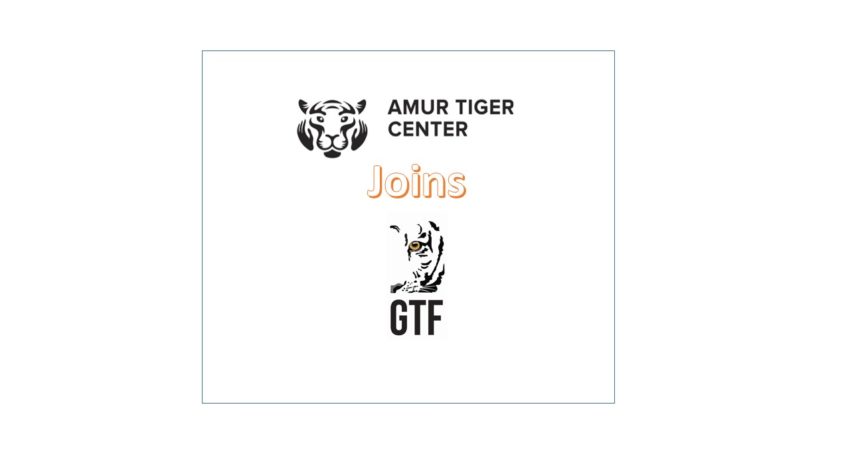
The Amur Tiger Center joins the Global Tiger Forum
The Amur Tiger Center has become the official representative of Russia in the GTF on 11 July 2019. The decision was made by the standing committee of the GTF.
The “Amur Tiger Center” is an autonomous non-commercial organization established for preservation and researching the Amur tiger population. It was founded in July 2013 by the Russian Geographic Society at the initiative of President of the Russian Federation Vladimir Putin.
Aim of the Amur Tiger Center:
- Researching the Amur tiger
- Preserving and increasing the population
- Establishing, harmonized relationship
“Russia is an important tiger range country and has a long-standing successful track record of wild tiger conservation. The Amur Tiger Center of Russia has evolved as a center of excellence, providing valuable insights for the Amur tiger in-situ conservation. The Global Tiger Forum is delighted to welcome the Amur Tiger Center as its member and look forward to a great collaboration with Russia for strengthening the tiger cause through exchange of good field practices, knowledge sharing for active management to strengthen tiger prey base and related research”
– Dr. Rajesh Gopal, Secretary General, GTF
Read main article: http://amur-tiger.ru/en/press_center/news/1310/
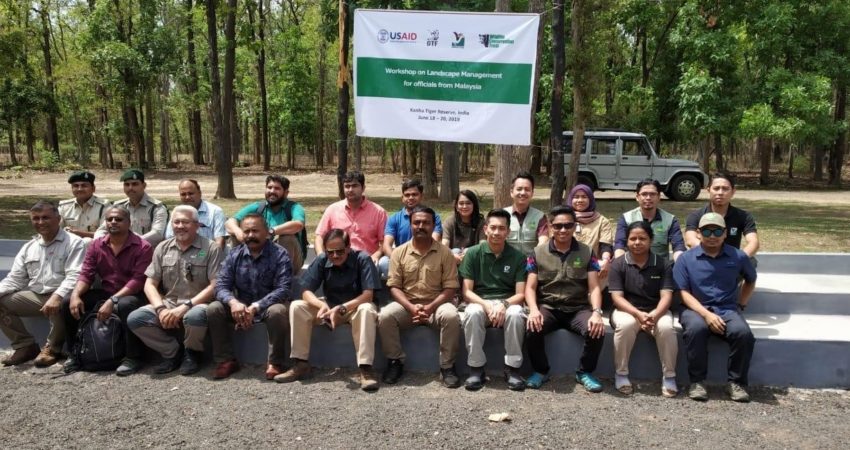
Workshop on Landscape Management for officials from Malaysia in Kanha Tiger Reserve, India
Under ongoing USAID-WCT project, a workshop on landscape management for officials from Malaysia was held at the Kanha Tiger Reserve from 18 – 20 June 2019. The said workshop was attended by Government officials from Malaysian Forest Department, National Tiger Conservation Authority (NTCA), Madhya Pradesh Forest Department (MPFD) and representatives from GTF and WWF-India. Field and technical sessions were coordinated by the representatives of the Global Tiger Forum and staff of the Kanha Tiger Reserve. The agenda for the said workshop was based on GTF Mission’s field visit to a priority tiger site (Royal Belum State Park), meeting with Dr. Xavier Jayakumar, Hon’ble Minister of Water, Land & Natural Resources, Malaysia, and consultation with the Department of Wildlife & National Parks (DWNP), Government of Malaysia.
With a focus on tiger conservation priorities in Malaysia, key elements of this workshop included: Joint actions on
- implementing action plan in Malaysia
- community participation
- conservation & protection
- strategies on involving NGOs and communities among others
apart from tiger and prey recovery, protected area management, frontline and community welfare.
Field sessions were focussed on BOMA technique for prey translocation, prey augmentation protocols, design and maintenance of tiger rewilding enclosures, development and maintenance of patrolling and park management infrastructure, M-STrIPES monitoring, ecotourism, and community engagement portfolio.
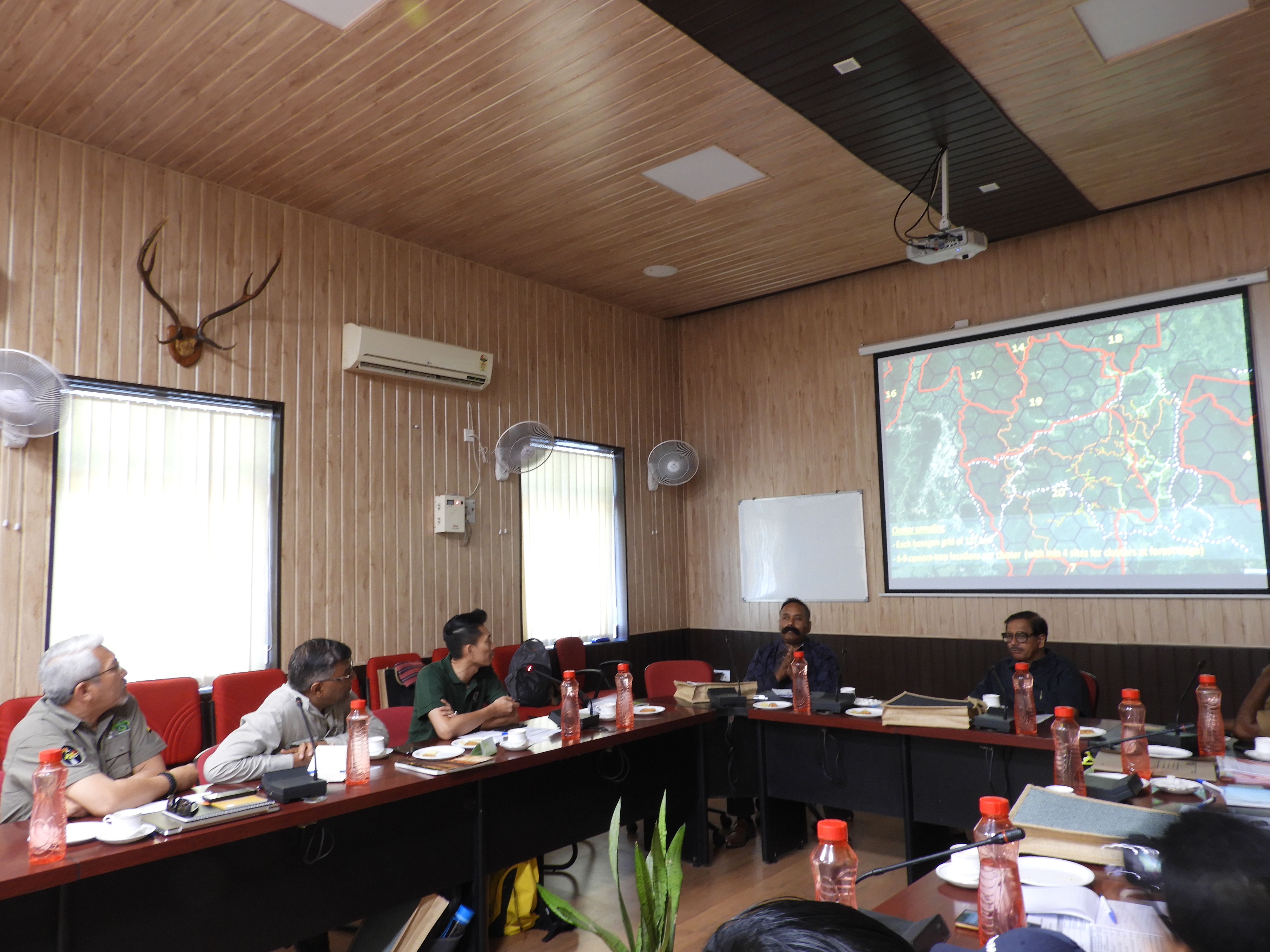
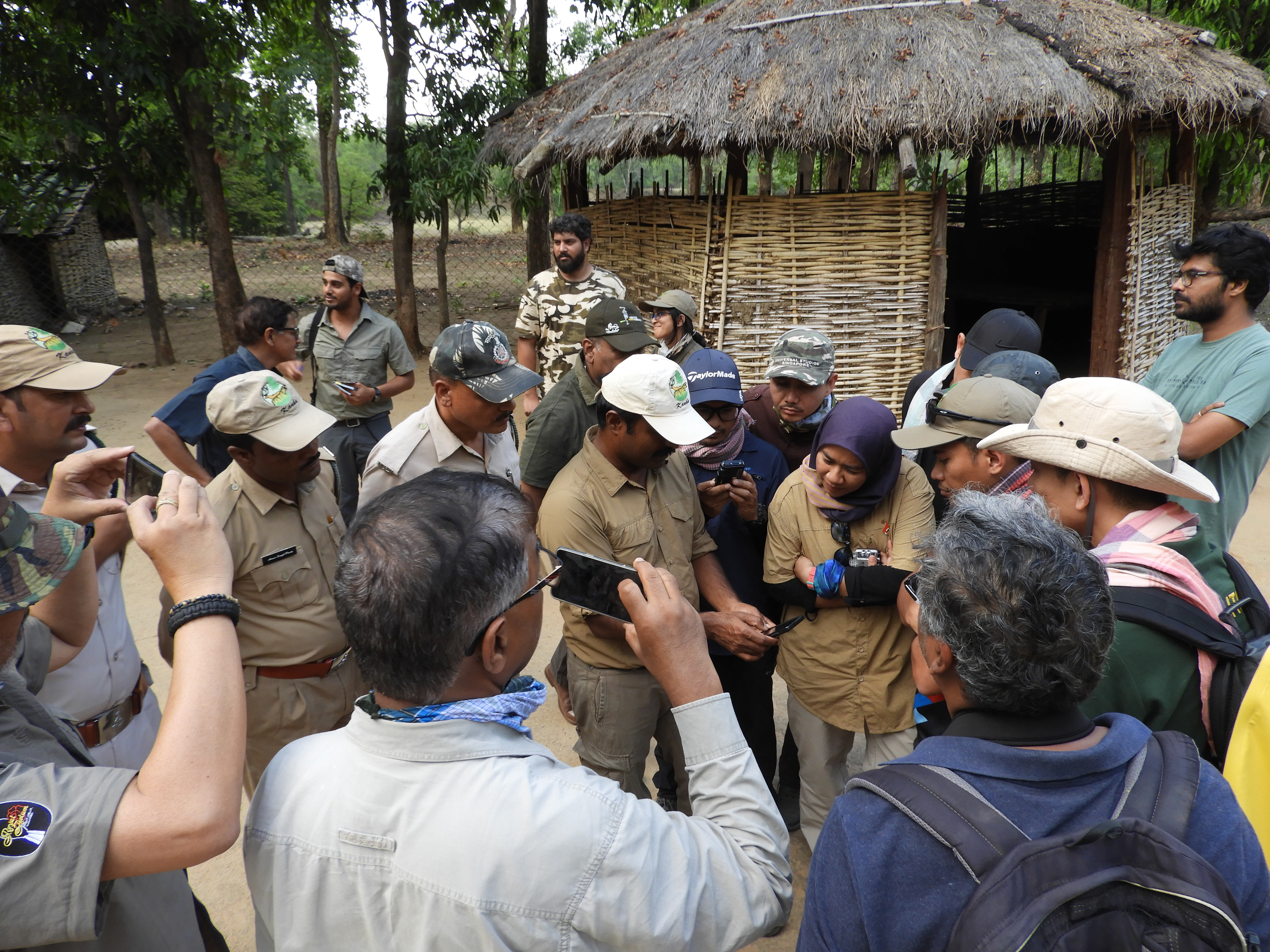
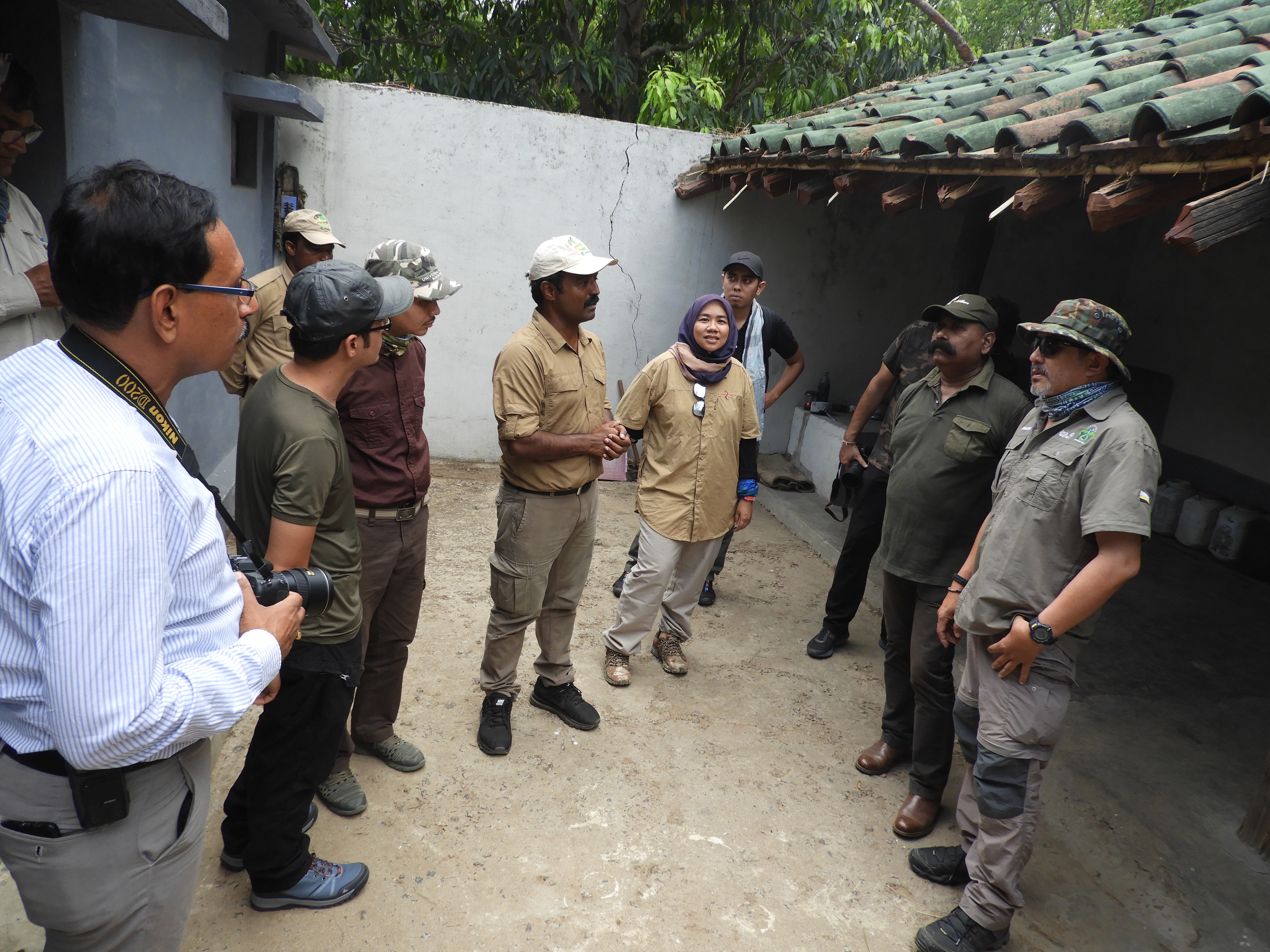
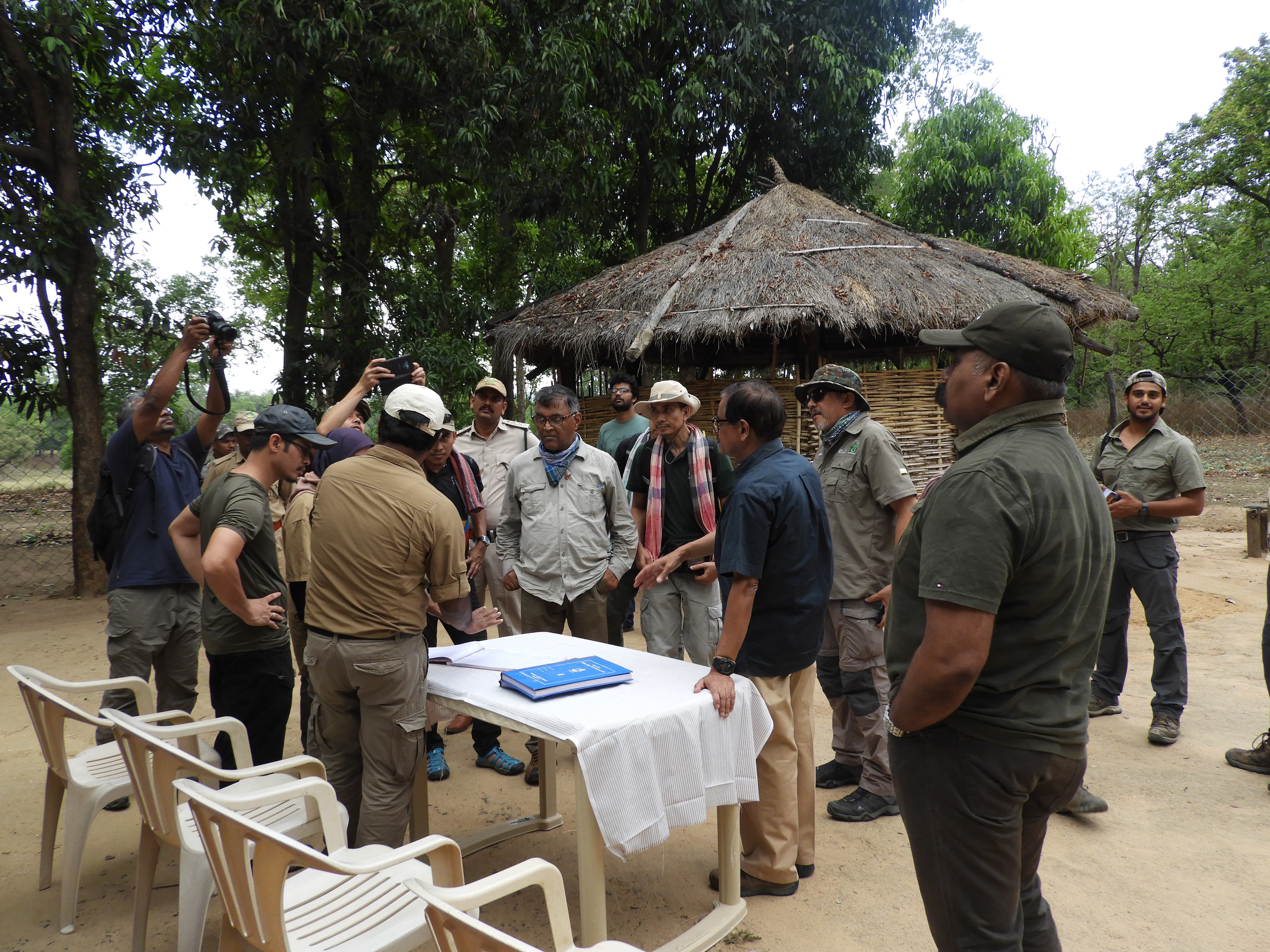
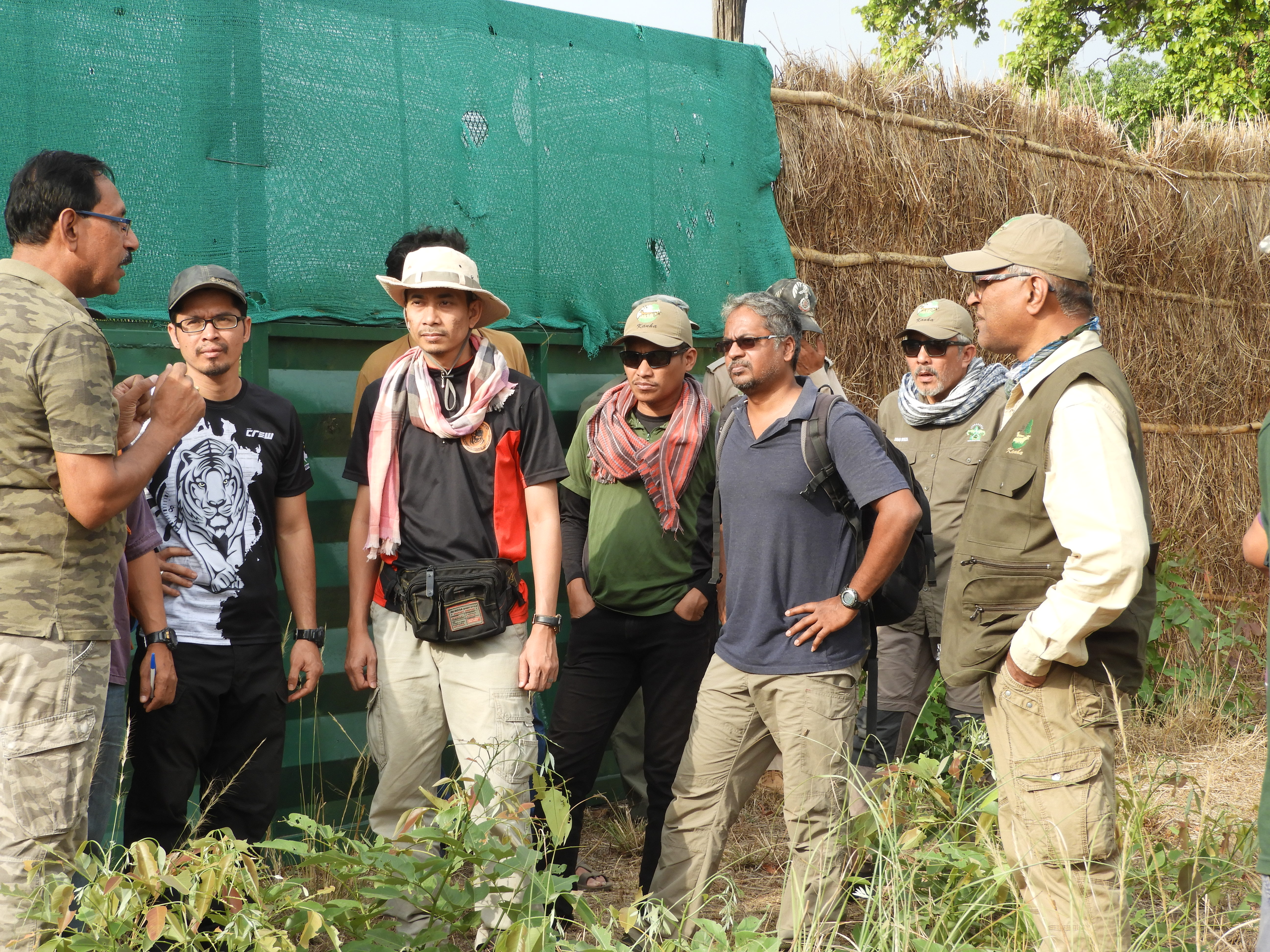

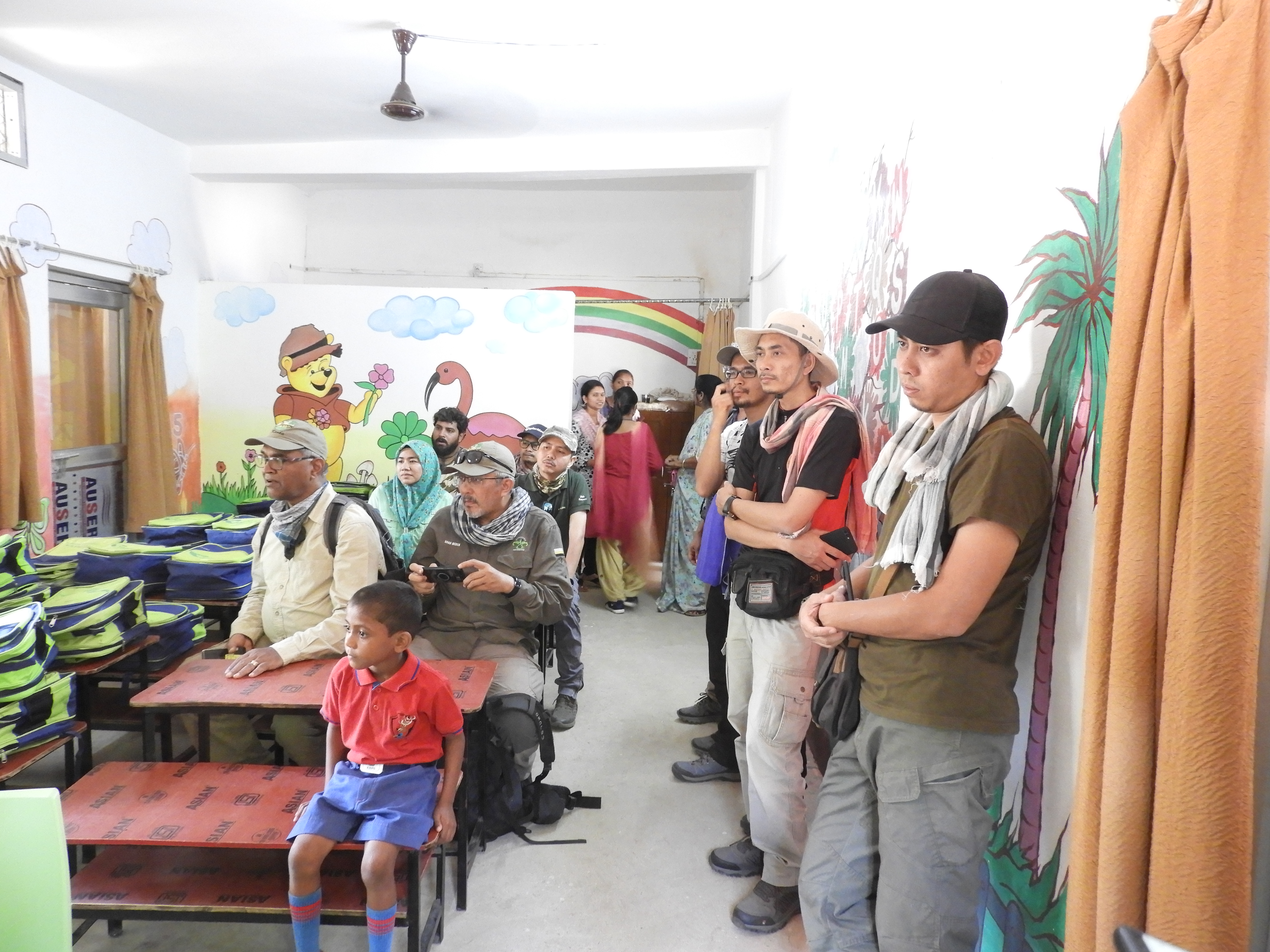
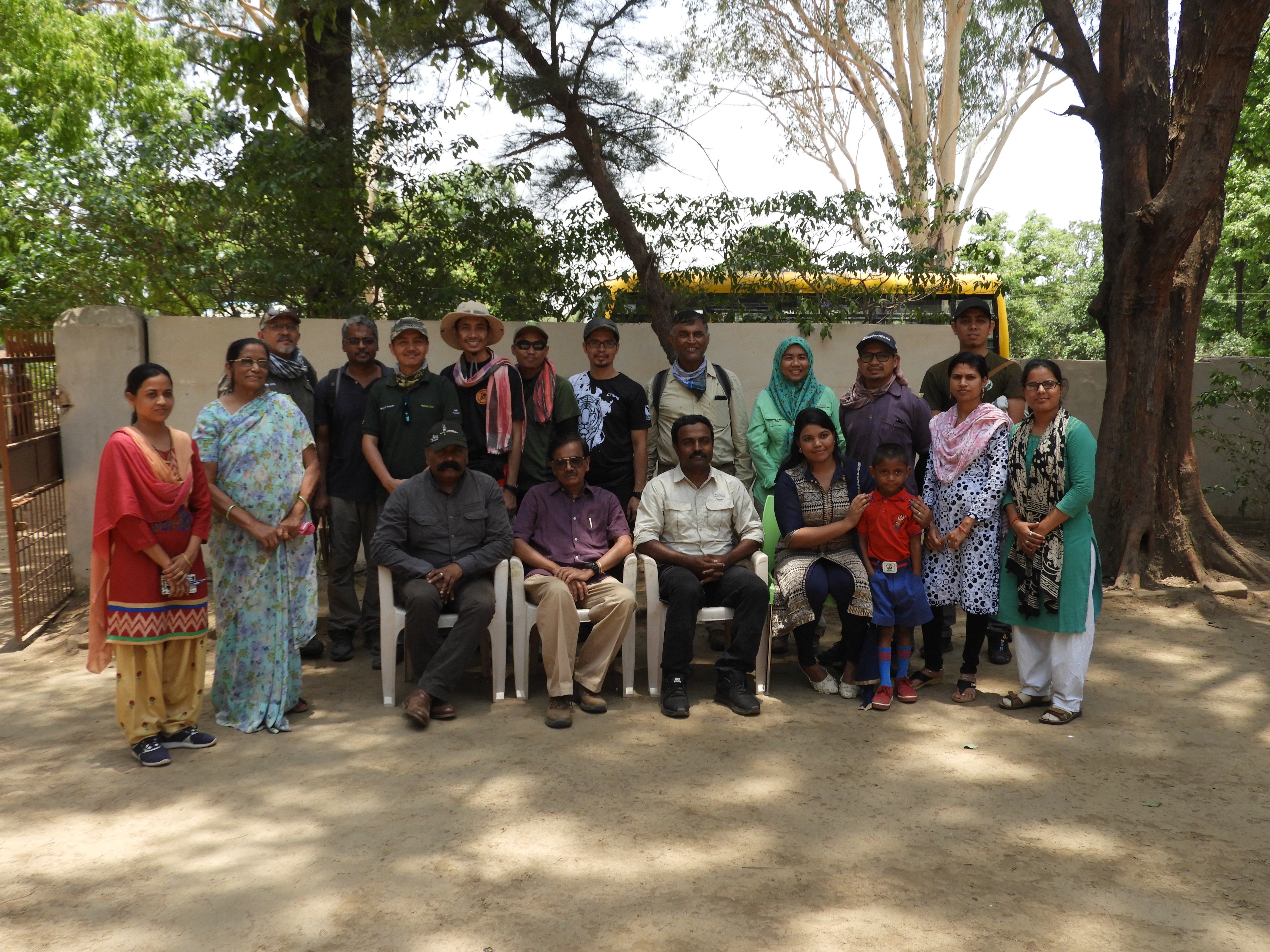
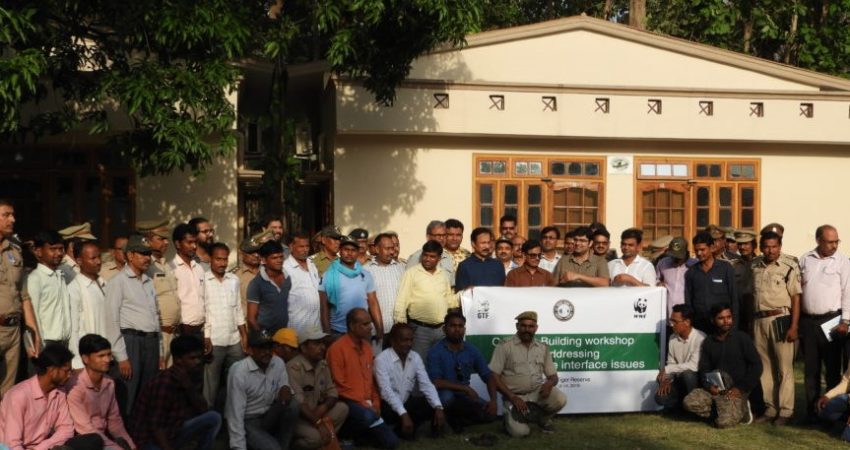
Capacity Building workshop on addressing human wildlife interface issues in Uttar Pradesh
Under ongoing GTF and Uttar Pradesh forest department project to address human wildlife interface issues, a “Capacity building workshop on addressing human wildlife interface issues” in Uttar Pradesh Terai Arc Landscape was conducted at Dudhwa Tiger Reserve from 12 to 14 June 2019. The said workshop was attended by officials from GTF, WII, Dudhwa & Pilibhit tiger reserves, Katarniaghat WLS, North Kheri forest division along with frontline staff of the said sites. The workshop was also attended by representatives of WTI and WWF-India along with community stewards.
The three day workshop was focused on:
- Managing Human Wildlife Interface Issues
- Efforts on reducing Human Wildlife Conflict in the Terai landscape
- How and when to use Standard Operating Procedures (SOPs)
- Community Stewardship – “Bagh Mitra”
- Demonstration of Rescue/Darting/Release
- Demonstration of wireless system function
- Demonstration of camera trap
- Demonstration of sniffer dog exercise to curb poaching
- On ground situational field exercises in case of: 1. Human death 2. Live stock death and 3. Entry of tiger in human dominated area
The Workshop concluded with reiteration by GTF, U.P forest department & other partner agencies of developing a joint mechanism for mitigation of human-wildlife interface and development of early warning systems in Terai Arc Landscape
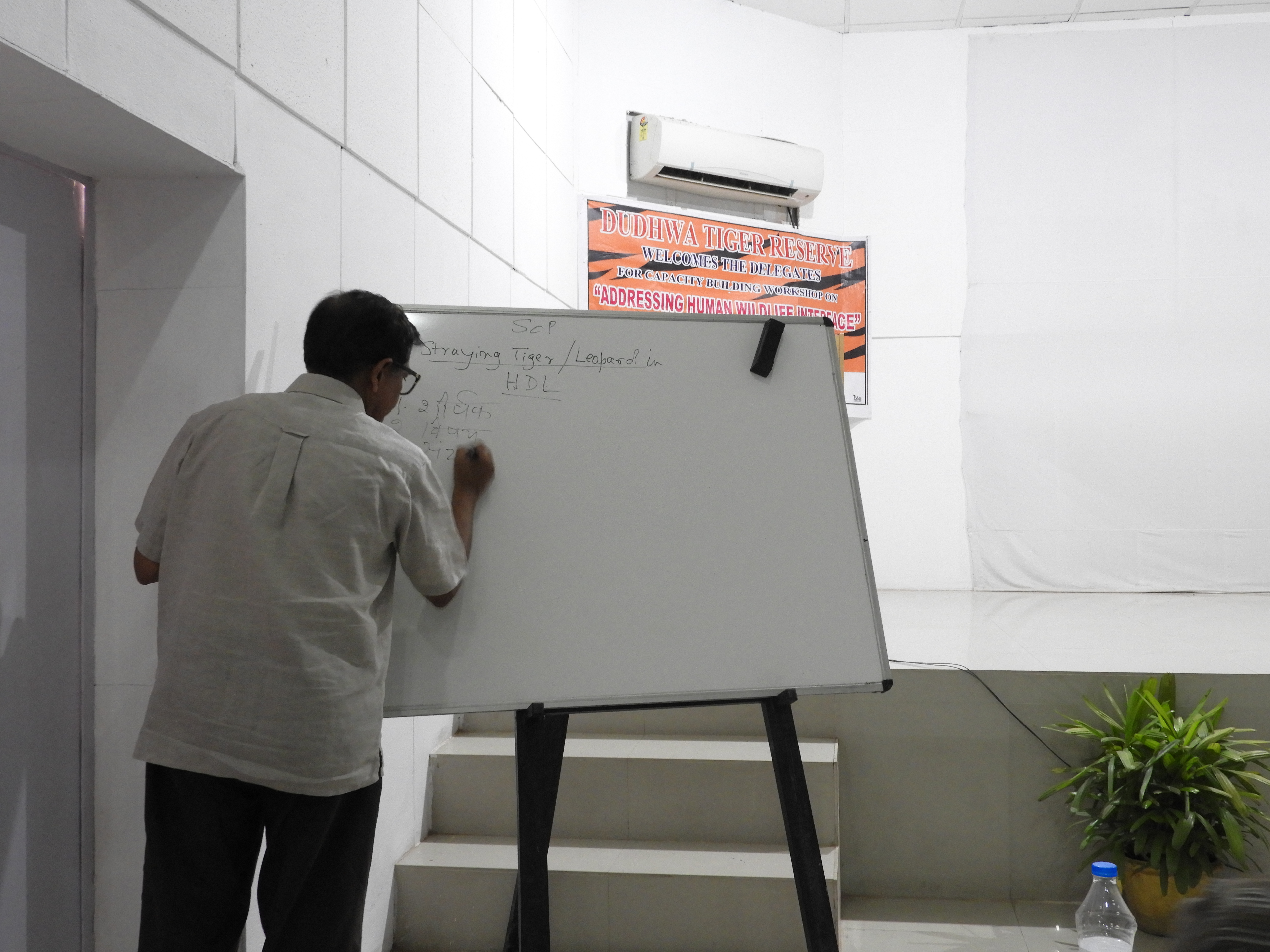
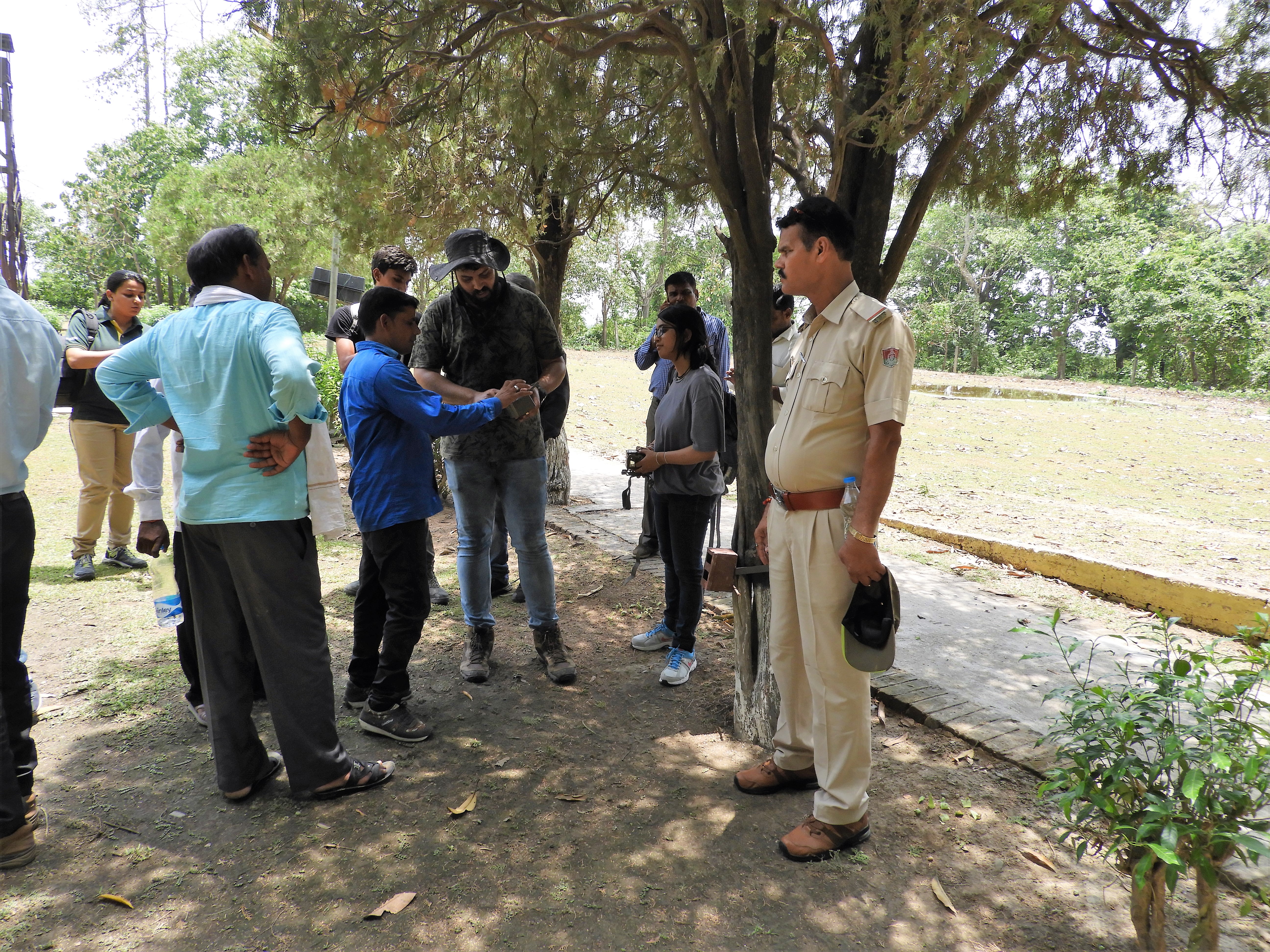
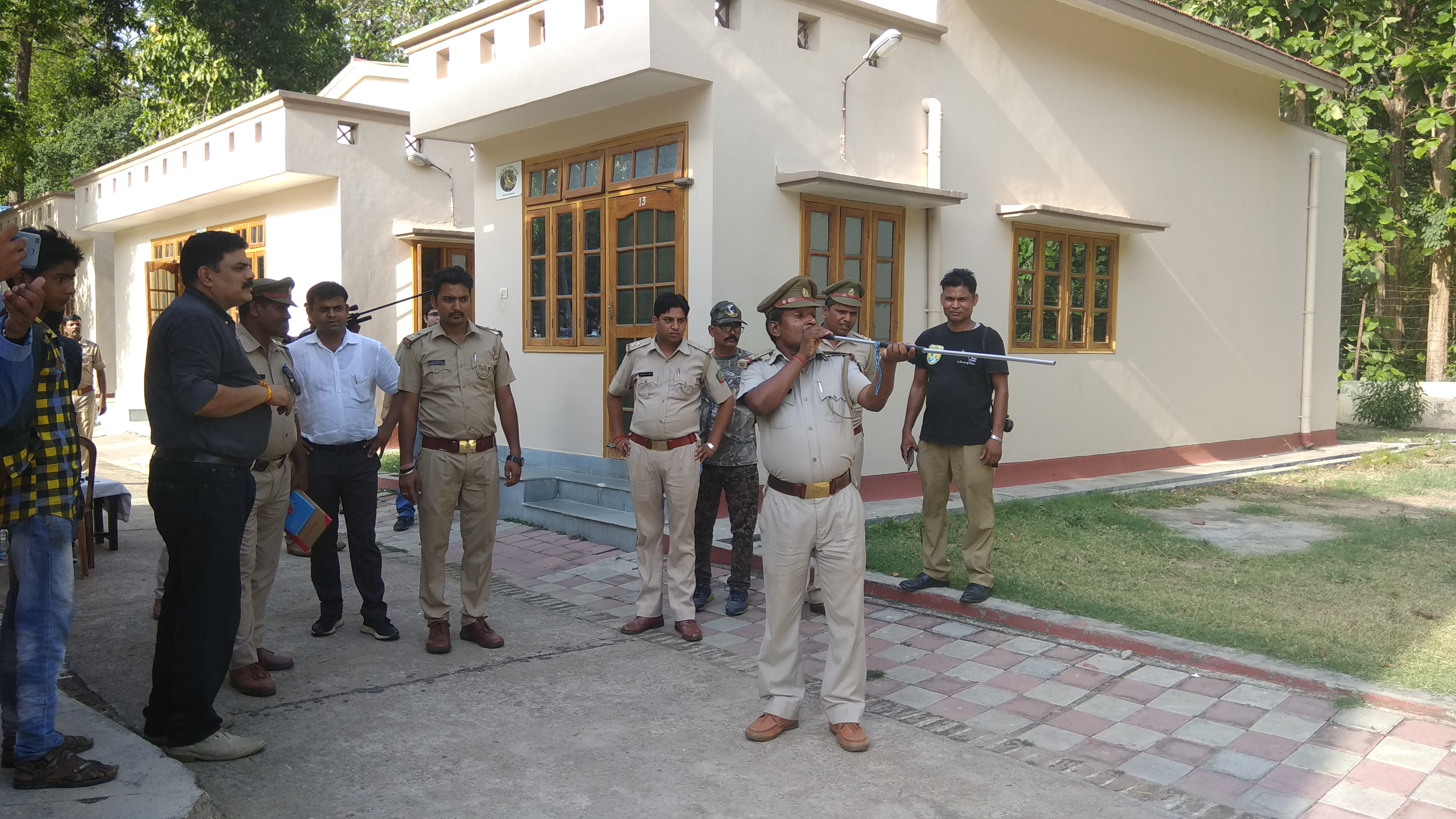


Indo-Bangladesh transboundary consultation
Under the ongoing USAID-WCT-GTF engagement for strengthening conservation efforts in Tiger Range Countries, a consultation meeting was organized by GTF on addressing illegal wildlife trade and trafficking between India and Bangladesh at Hotel the Royal Plaza, New Delhi, India on 27 and 28 May 2019. The meeting was attended by Government officials from Bangladesh Forest Department (BFD), National Tiger Conservation Authority (NTCA), Wildlife Crime Control Bureau (WCCB), West Bengal Forest department and representatives from GTF, U.S. Embassy, WWF-India and TRAFFIC-India.
The consultation focused on wildlife crime in the transboundary region, challenges for conservation and protection, strategies to counter Illegal Wildlife Trade (IWT), case studies on best practice models to combat poaching and trafficking, sharing of information on illegal wildlife trade routes and wildlife networks.
Both the countries agreed on an action agenda, vis-à-vis existing MoU, especially joint actions between the two countries in the Sunderbans landscape.
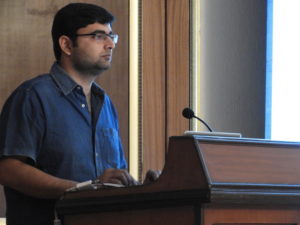
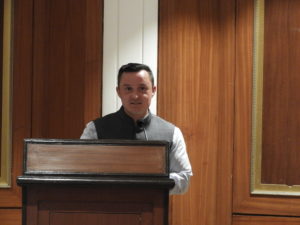
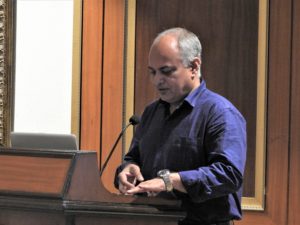


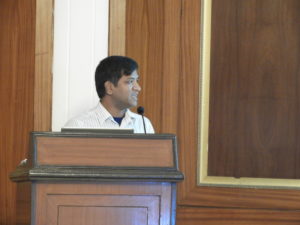
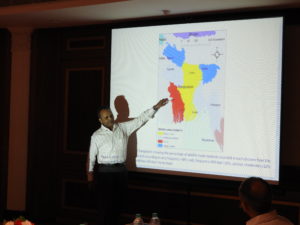
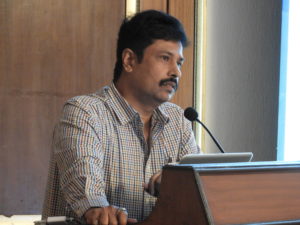

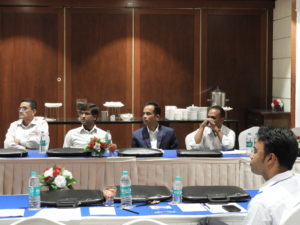
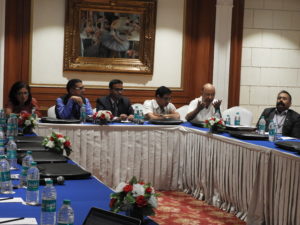
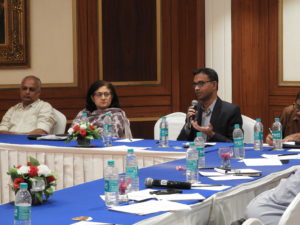
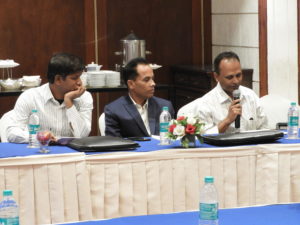
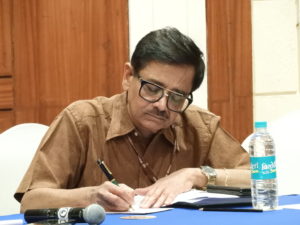

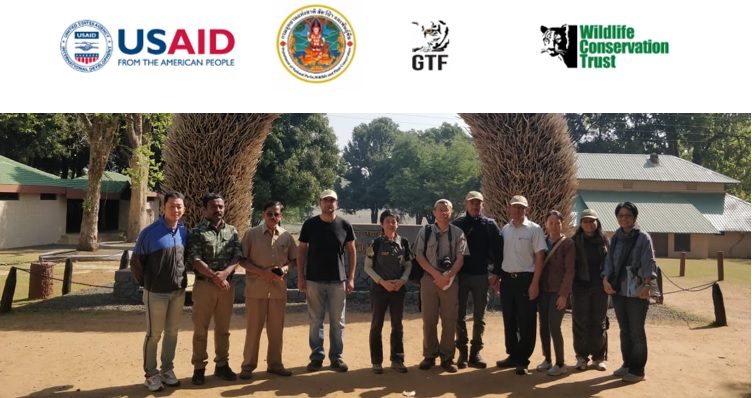
Workshop on Landscape Management for official from Thailand: Kanha Tiger Reserve, India
Global Tiger Forum (GTF) in collaboration with USAID-WCT is implementing a regional capacity building program for Tiger Range Countries. Recently, a workshop on Landscape Management was organised for officials from Thailand government (April 9- April 11, 2019) at Kanha Tiger Reserve, Madhya Pradesh. The agenda for the said workshop was based on GTF Mission’s field visit to a priority tiger site (Huai Kha Khaeng) in Western Forest Complex (WEFCOM) and consultation with the Department of National Parks, Wildlife and Plant Conservation, Government of Thailand. Given adequate protection, and implementation of prey/tiger recovery measures, WEFCOM has a great potential for reviving and sustaining tiger and prey populations in the region.
With a focus on tiger conservation priorities in Thailand, key elements of this workshop included: protection, tiger and prey recovery, protected area management, inclusive community engagement beyond the core critical tiger habitat, apart from frontline and community welfare.
Field sessions were focussed on BOMA technique for prey translocation, prey augmentation protocols, design and maintenance of tiger rewilding enclosures, development and maintenance of patrolling and park management infrastructure, M-STrIPES monitoring, ecotourism, and community engagement portfolio.
List of participants from Thailand
- Kanjana Nitaya, Director, Wildlife Conservation Bureau, National Parks Wildlife and Plant Conservation Department
- Soontorn Chaiwatana, Director, Wildlife Breeding Division, Wildlife Conservation Bureau, National Parks Wildlife and Plant Conservation Department
- Tarasak Nipanan, Head, Huai Kha Khaeng Wildlife Breeding Station
- Luxsana Prasittichai , Veterinarian, National Parks Wildlife and Plant Conservation Department
- Somying Thunhikorn , Technical Officer, Wildlife Research Division, Wildlife Conservation Bureau, National Parks Wildlife and Plant Conservation Department
- Paitoon Intarabut, Head, Saluk Phra Wildlife Sanctuary

Consultation On Malaysian Tiger Action Plan & Priority Sites in Malaysia
Under the ongoing USAID-WCT collaboration, the GTF technical team/mission visited Malaysia for a consultation on national tiger action plan and key priorities, followed by a field visit to a priority tiger site, Royal Belum State Park.
A meeting chaired by the Hon’ble Minister, of Water, Land and Natural Resources, Malaysia, was attended by the GTF technical team along with Secretary General, KATS, Director General, Department of Wildlife and National Parks, Peninsular Malaysia and other senior officials of the wildlife department wherein in depth discussion with regard to the tiger recovery in Malaysia was held and a presentation was given by the Secretary General, GTF. A brief on the GTF architecture and mandate was presented and suggestion for a Malaysia Tiger Task Force, for reinvigorating the system of governance relating to tiger and other wildlife under the Prime Minister with all state Chief Ministers, collaborators, army, police and GTF, as members was provided.
The team also attended an event which was a part of World Wildlife Day Celebrations of the Malayan Tiger Campaign 2019-20, which was inaugurated by the Hon’ble Minister of Water, Land and Natural Resources, Government of Malaysia. In his speech, the Hon’ble Minister acknowledged the role of GTF in handholding Tiger range Countries. This event marked the presence of Ambassadors and High Commissioners from several countries, along with representatives of collaborators, NGOs, media, academia, children and other stakeholders.
GTF is committed to facilitate synergies between the Malaysian Government, collaborators and the National Tiger Conservation Authority (NTCA), Government of India, for a partnership towards long term conservation efforts.
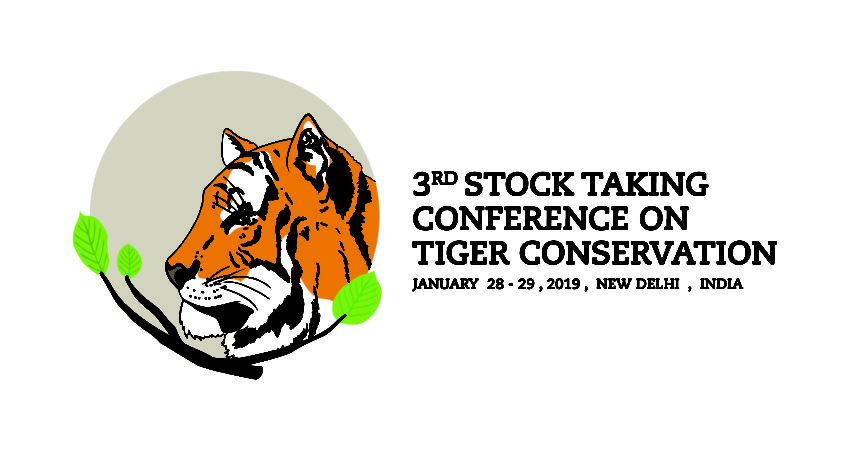
Report of the 3rd Stocktaking Conference
The Global Tiger Forum organised the 3rd Stocktaking Conference on 28 – 29 January, in collaboration with Global Tiger Initiative Council (GTIC), National Tiger Conservation Authority (Government of India), Wildlife Conservation Trust (WCT), Wildlife Trust of India (WTI), and WWF. This is the latest collective step in the process that began at the 2010 St Petersburg Tiger Summit – where 13 tiger-range governments committed to Tx2 – an ambitious goal to double the global wild tiger population by 2022.
The report for the same is provided below:
https://globaltigerforum.org/wp-content/uploads/2019/03/Report_3rd-Stocktaking-Conference-1.pdf
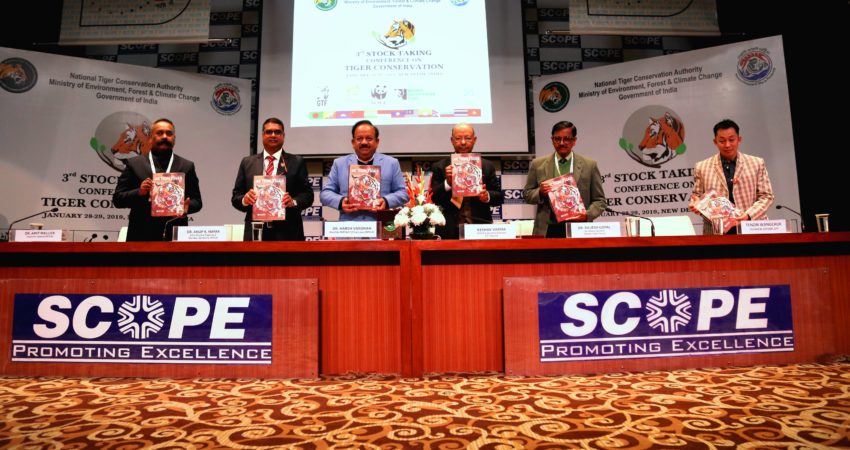
3rd Stocktaking Conference
The Global Tiger Forum organised the 3rd Stocktaking Conference on 28 – 29 January, in collaboration with Global Tiger Initiative Council (GTIC), National Tiger Conservation Authority (Government of India), Wildlife Conservation Trust (WCT), Wildlife Trust of India (WTI), and WWF. This is the latest collective step in the process that began at the 2010 St Petersburg Tiger Summit – where 13 tiger-range governments committed to Tx2 – an ambitious goal to double the global wild tiger population by 2022.
The conference was inaugurated by the Union Minister for Environment, Forest and Climate Change, Dr. Harsh Vardhan. “Conservation of tigers is a duty which has to be meticulously pursued and more innovative ways need to be devised so that we can better the targets adopted by tiger range countries in 2010 at St. Petersburg, Russia”, said Dr Vardhan.
“We must take concerted action to revive tiger populations globally, and this can only happen with long-term investment and the utmost commitment of government leaders, especially from Southeast Asia where there is a risk of losing wild tigers altogether,” said Mr. Rajesh Gopal, Secretary General, Global Tiger Forum.
Over one-third of tiger conservation sites in the world are severely at risk of losing their wild tigers – the majority of which are in Southeast Asia. Many of these areas lack basic plans for effective management, with over 60 per cent of the sites facing several limitations in anti-poaching, according to a first-ever global survey of tiger sites.[1]
Governments reported on the current status of national tiger recovery efforts, highlighting challenges and sharing best practices. Increasing challenges with poaching, lack of capacity, and habitat loss were highlighted as key barriers to tiger recovery among Southeast Asian governments
The two day conference included country updates on the key performance indicators, KPIs of their National Tiger Recovery Programs (NTRP), and the technical presentations on themes such as protection, habitat/ prey/ tiger recovery, management of human wildlife interface issues, smart green infrastructure, habitat and field management, conservation finance and partnerships. Apart from this, there were also four Side Events, including the reviewing of the Sub continental level Tiger estimation for India, Bangladesh, Bhutan, and Nepal, maximizing synergies of partnerships for tiger conservation, combating wildlife trafficking issues and finally a discussion on the contours of strategy for convention (CITES).
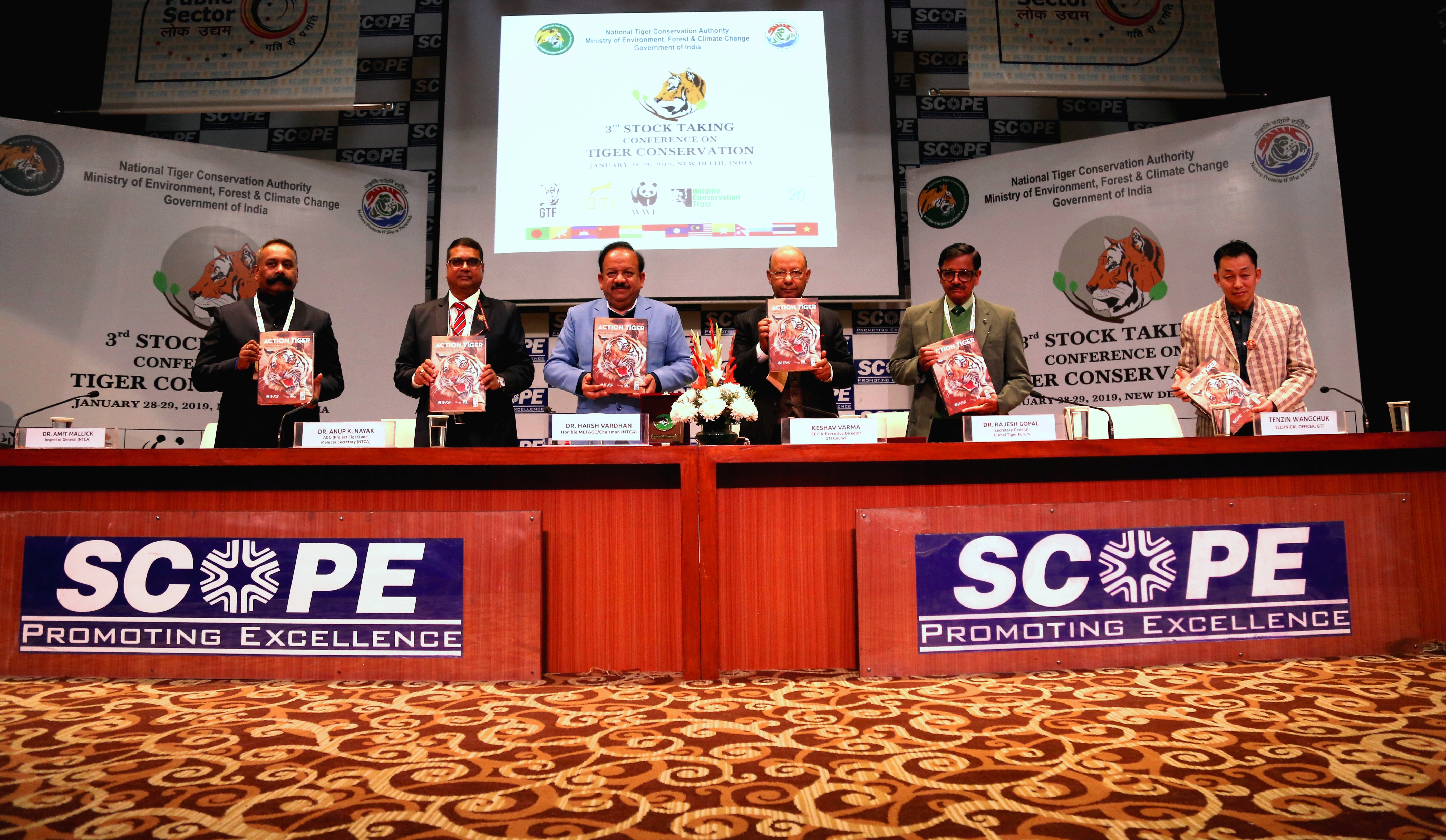
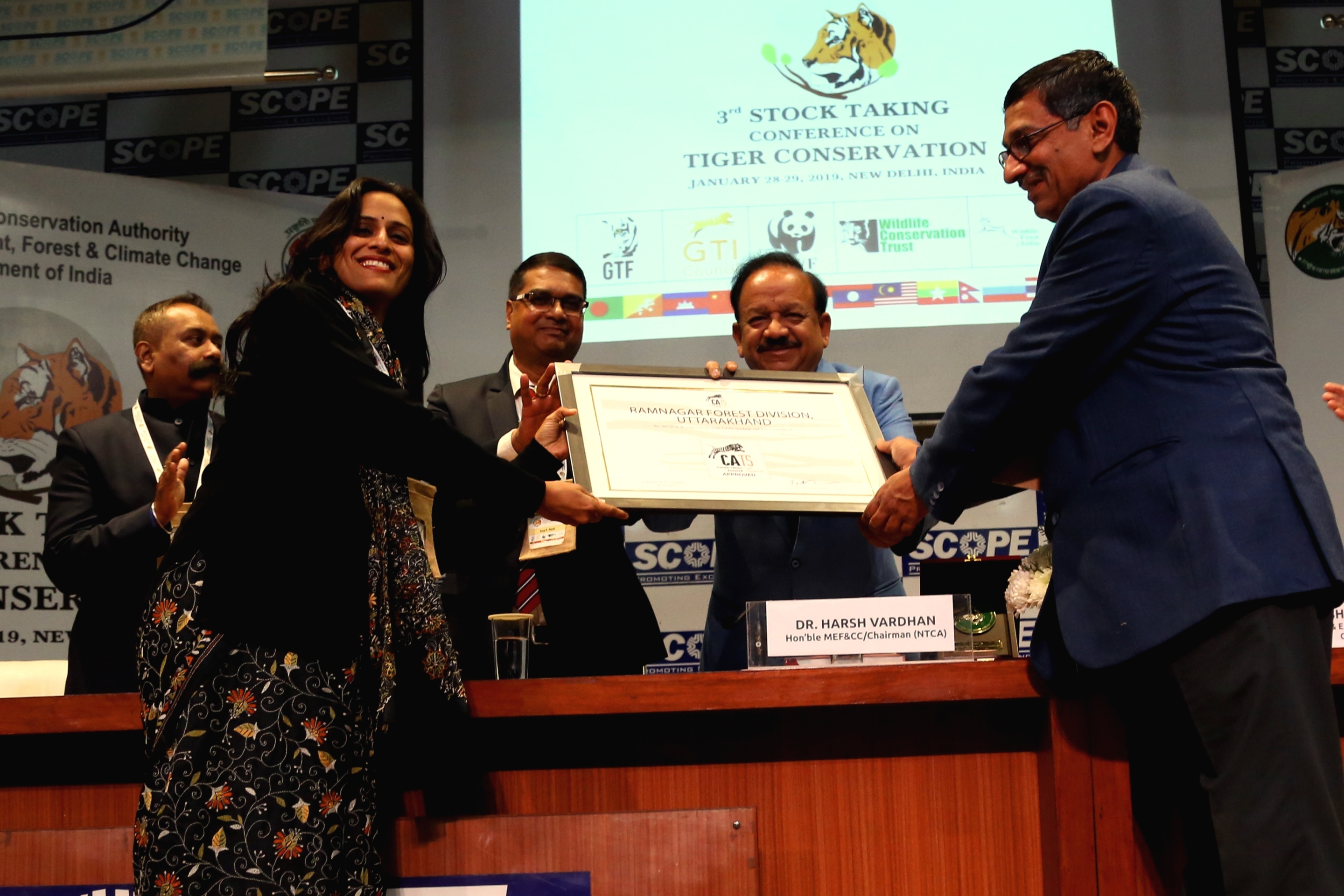
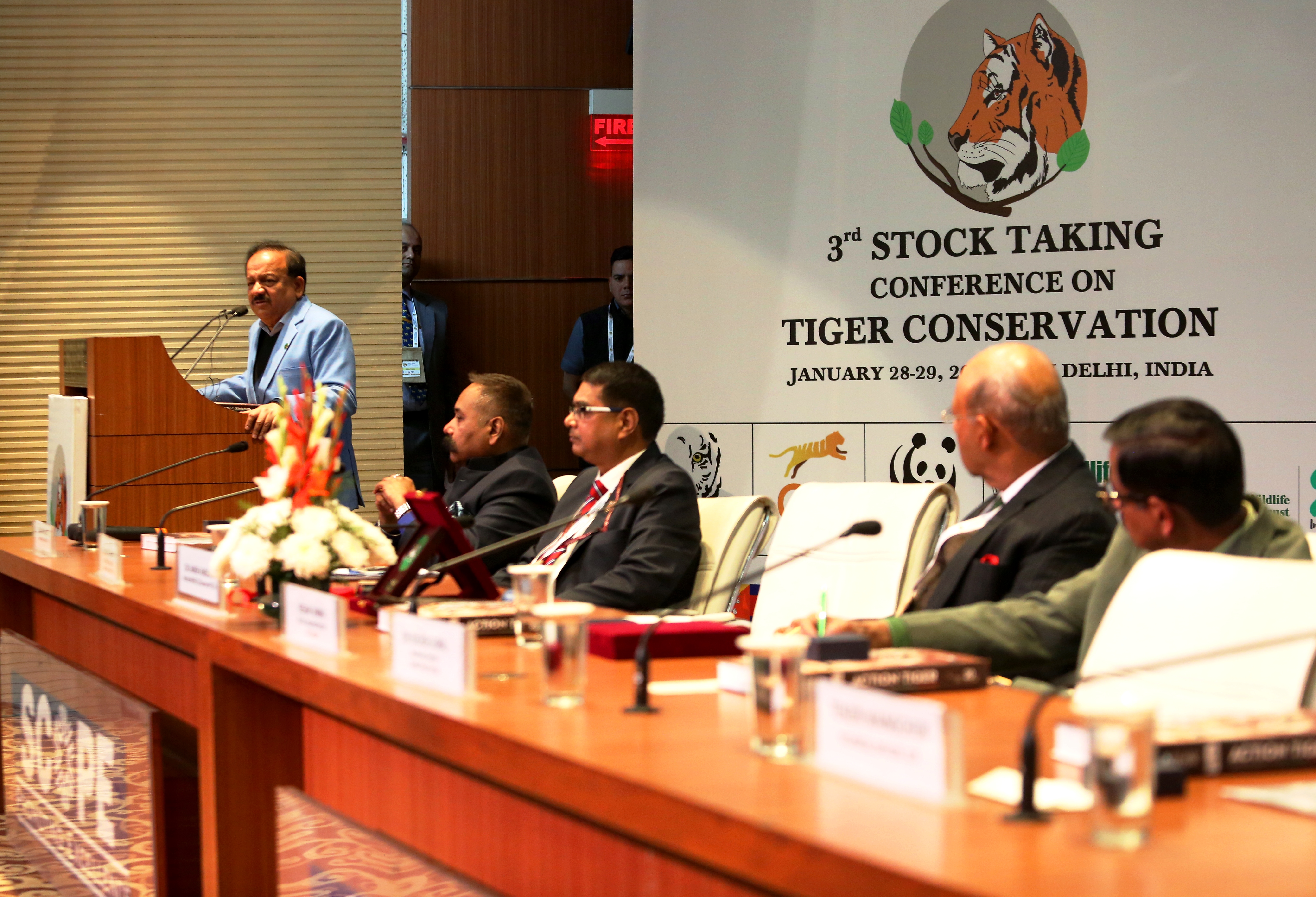
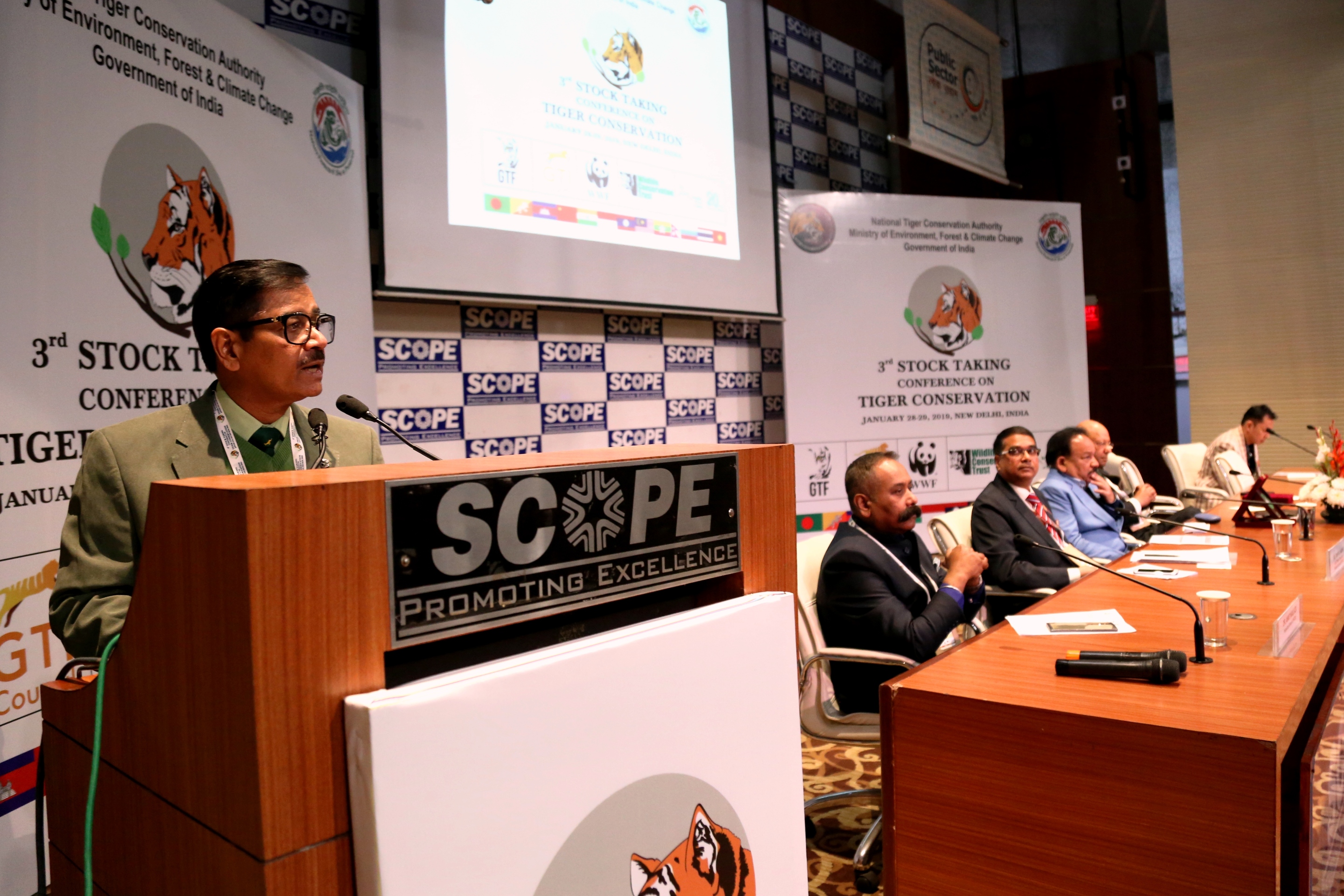
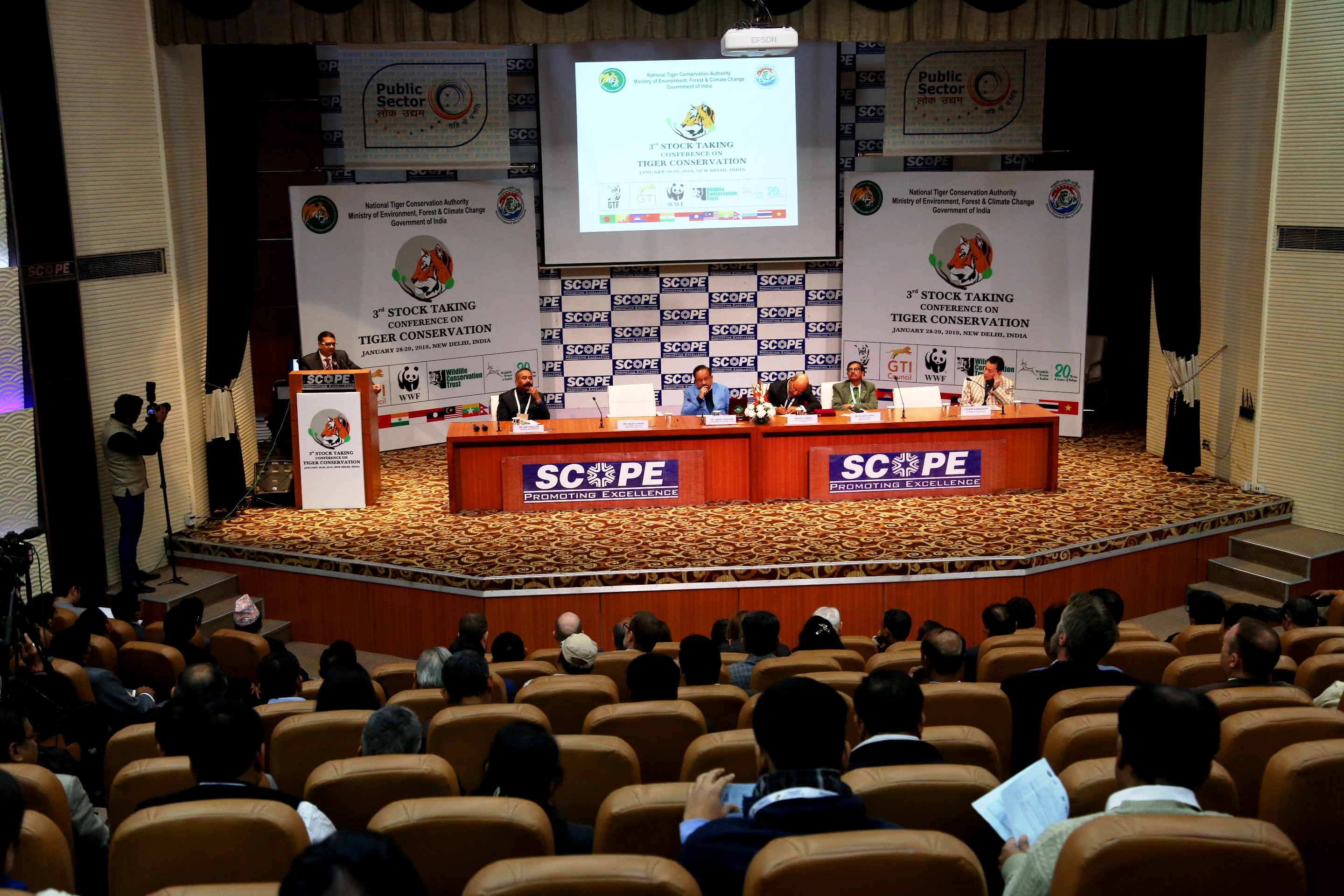

3rd Stocktaking Conference
We are pleased to inform you that the 3rd Stocktaking conference on tiger conservation relating to GTRP/NTRP implementation would be held from 28-29 January 2019 at the SCOPE Complex, New Delhi. This is organized by the Global Tiger Forum, as an implementing arm of the Global Tiger Initiative Council (GTIC), in collaboration with the National Tiger Conservation Authority (Government of India), WWF, Wildlife Conservation Trust (WCT) and Wildlife Trust of India (WTI).
(Entry by invitation only)
For more information on the same, contact: admin@globaltigerforum.org
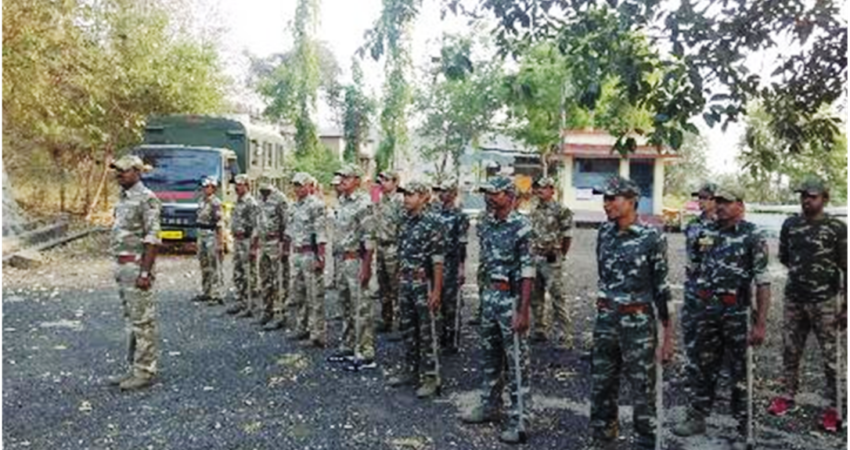
Security Audit
The Global Tiger Forum in association with WWF-India and Wildlife Crime Control Bureau (WCCB) has conducted the Security Audit of 25 Tiger Reserves for the NTCA.
This exercise is based on a validation study at Kanha and Satkosia Tiger Reserve that led to development of the Security Audit protocol and is now being used as the baseline document for conducting the audit in 25 tiger reserves.
By regular evaluation of security status of the tiger reserve, manager of the TRs will be able to assess current status of enforcement efforts, assess gaps and undertake necessary field actions to enhance protection.
The Security Audit exercise is being implemented in following Tiger Reserves:
Navegaon-Nagzira , Tadoba , Melghat , Pench (Maharasha) , Pench , Satpura, Panna , Bandhavgarh , Sanjay Dubri , Rajaji , Ranthambhore , Mukundara Hills , Sariska , Corbett , Similipal , Biliguri-Ranganatha Temple , Sathyamangalam , Bandipur , Valmiki , Dudhwa , Pilibhit , Kaziranga, Sunderbans , Manas and Orang.
